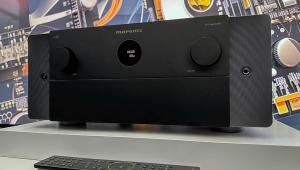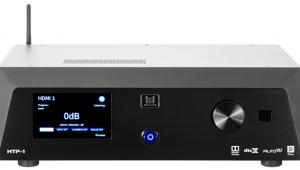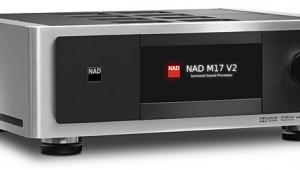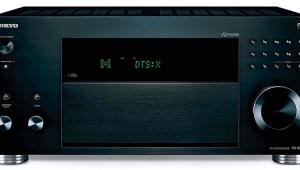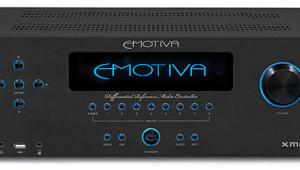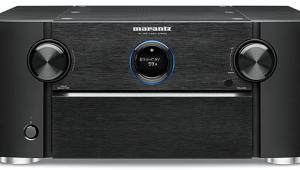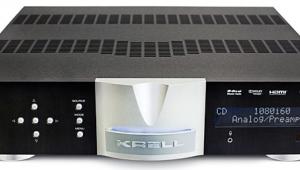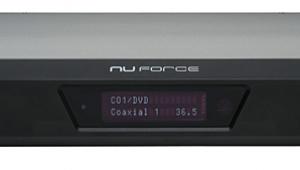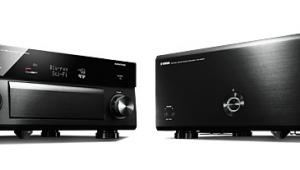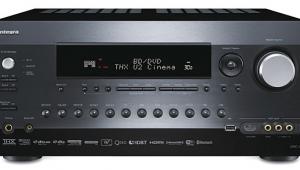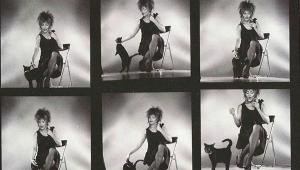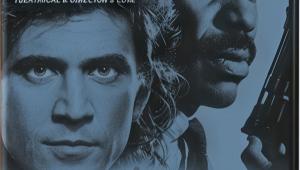Marantz AV8801 Surround Processor & MM8077 Amplifier HT Labs Measures
Marantz AV8801 Surround Processor
Analog frequency response in Direct mode:
–0.19 dB at 10 Hz
–0.05 dB at 20 Hz
–0.01 dB at 20 kHz
–0.04 dB at 50 kHz
Analog frequency response with signal processing:
–1.23 dB at 10 Hz
–0.39 dB at 20 Hz
–0.21 dB at 20 kHz
–15.78 dB at 50 kHz
The chart below shows the frequency response of the left (aqua), center (green), LFE (purple), and left surround (red) channels at the preamp outputs of the Dolby Digital decoder. The left channel measures –0.04 decibels at 20 hertz and –0.33 dB at 20 kilohertz. The center channel measures –0.05 dB at 20 Hz and –0.25 dB at 20 kHz, and the left surround channel measures –0.04 dB at 20 Hz and –0.25 dB at 20 kHz. The LFE channel, normalized to the level at 40 Hz, is –0.00 dB at 20 Hz, reaches the upper –3-dB point at 118 Hz and reaches the upper –6-dB point at 121 Hz.

Response from the multichannel input to the main output measures –0.17 dB at 10 Hz, –0.04 dB at 20 Hz, –0.01 dB at 20 kHz, and –0.05 dB at 50 kHz. The analog THD+N was less than 0.017 percent at 1 kHz with a 100-millivolt input and the volume control set to 83.0. Crosstalk with a 100-mV input was –81.35 dB left to right and –83.60 dB right to left. The signal-to-noise ratio with “A” weighting was –124.15 dBrA.—MJP
Video Test Bench
The Marantz initially sailed through our HDMI benchmark tests when processing an HDMI signal with the exception of the Chroma Resolution test. The lower right box on the Spears & Munsil Benchmark disc showed some rolloff of the chroma signal culminating in a borderline Fail, but this deficiency didn’t rear its head in normal viewing material and only occurred when the Video Convert feature was in its default On position; taking the video processor out of the loop resulted in a Pass. As we finalized our review, Marantz investigated and sent a firmware update that fully resolved this issue, resulting in perfect video test bench scores across the board. The change is expected to be integrated wtith the AV8801's next firmware push. —DV

Marantz MM8077 Amplifier
Two channels driven continuously into 8-ohm loads:
0.1% distortion at 128.4 watts
1% distortion at 150.3 watts
Five channels driven continuously into 8-ohm loads:
0.1% distortion at 113.9 watts
1% distortion at 125.4 watts
Seven channels driven continuously into 8-ohm loads:
0.1% distortion at 108.9 watts
1% distortion at 116.8 watts
Frequency response RCA input:
–0.16 dB at 10 Hz
–0.04 dB at 20 Hz
+0.03 dB at 20 kHz
–2.64 dB at 50 kHz
Frequency response XLR input:
–0.19 dB at 10 Hz
–0.05 dB at 20 Hz
–0.08 dB at 20 kHz
–2.95 dB at 50 kHz
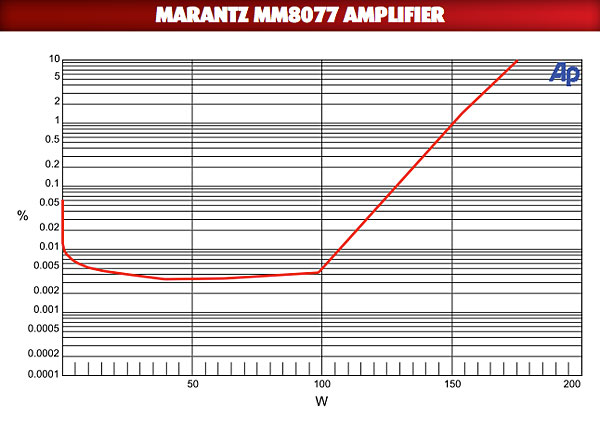
This graph shows that the MM8077’s left amplifier channel, with two channels driving 8-ohm loads, reaches 0.1 percent distortion at 128.4 watts and 1 percent distortion at 150.3 watts. Into 4 ohms, the amplifier reaches 0.1 percent distortion at 220.2 watts and 1 percent distortion at 241.8 watts. An input level of 100.8 millivolts was required to produce an output of 2.83 volts into an 8-ohm load, indicating an overall gain of +28.99 decibels using the RCA input. When using the XLR input, a level of 195.0 mv was required to produce an output of 2.83 volts into an 8-ohm load, indicating an overall gain of +23.28 dB.
THD+N from the amplifier was less than 0.007 percent at 1 kilohertz when driving 2.83 volts into an 8-ohm load using the RCA input. When using the XLR input under the same conditions, THD+N was less than 0.011 percent. Crosstalk at 1 kHz driving 2.83 volts into an 8-ohm load was –70.84 dB left to right and –70.72 dB right to left using the RCA inputs and –71.31 dB left to right and –71.46 dB right to left using the XLR inputs. The signal-to-noise ratio with an 8-ohm load from 10 hertz to 24 kHz with “A” weighting was –114.83 dBrA using the RCA input and –104.31 using the XLR input.—MJP

